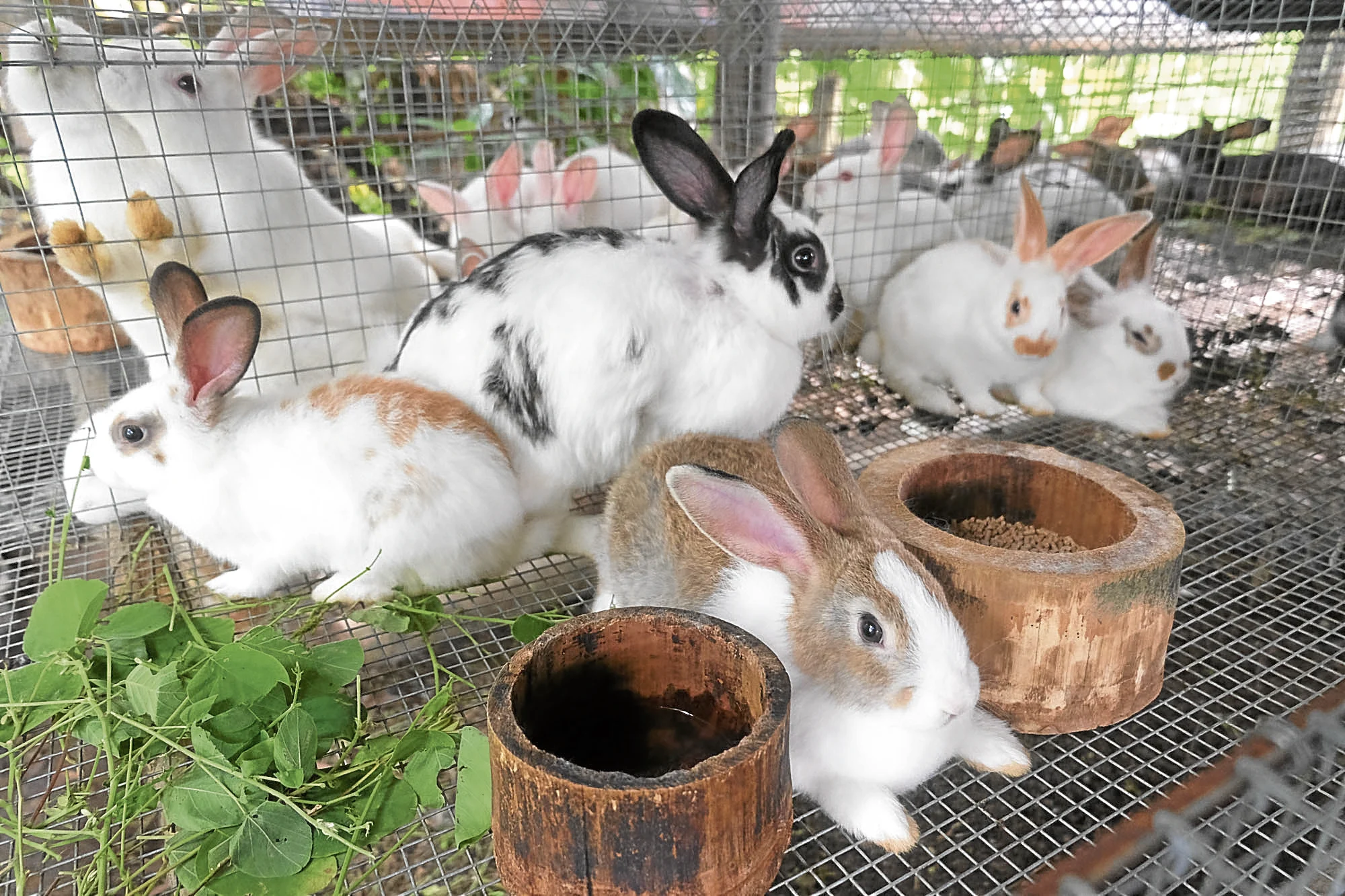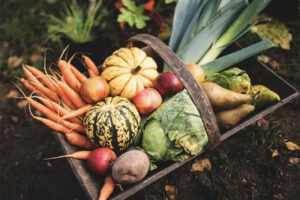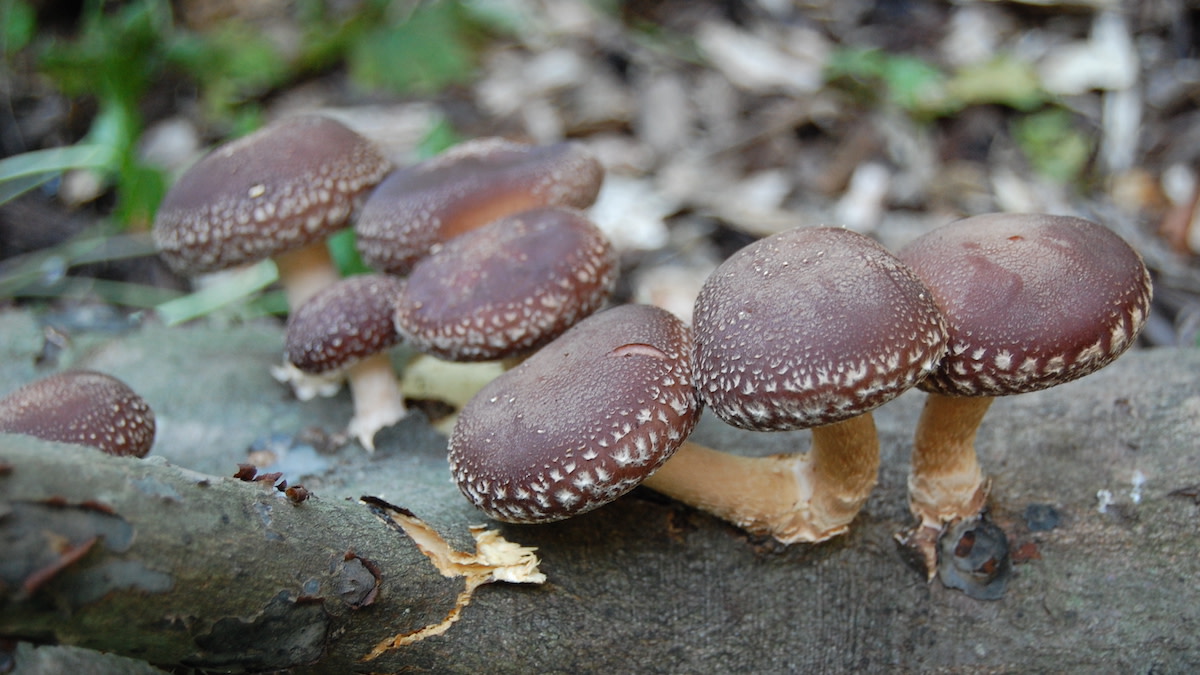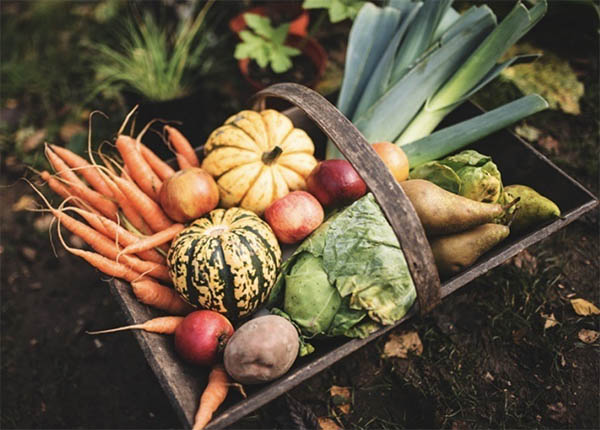Confession time.
We’ve been eating rabbit. Lots of it.
Ian butchered our rabbits several weeks ago, and since then we have eaten them grilled, curried and stewed. Every meal has been delicious so far and we even managed to serve some to our adventurous friends over Labor Day. I love the slightly gamey taste of our rabbits and the fact that each one is a perfect portion for two people. Our first livestock have been a complete success!
Butchering our first animals is a BIG DEAL. So why hasn’t it made it into this blog yet?
Frankly, I’ve been a little nervous about the reception. If you think bunnies are too fluffy and cute to be eaten, you’re in the majority. I’ve gotten some nasty comments in the past about our home-raised meat goals, and it taught me the perils of oversharing on the internet.
But I’m ready to open up. I’m not ashamed of our food source, and keeping quiet makes it seem like I am. In reality, I think that meat rabbits are an incredible way to raise that people everywhere should take advantage of. And I’m ready to share what we know.
If you’re interested in raising your own meat rabbits someday, this article will be a comprehensive place to start. Have any questions about the process? Ask me in the comments and I’ll get back to you right away.
So Why Should You Consider Raising Rabbits?
Rabbit meat just might be the meat of the future. These low-maintenance herbivores eat a plant based diet rather than the energy-intensive corn, soy or fish meal products that commercially produced livestock are fed.
Rabbits grow quickly and efficiently, packing on six times more meat per pound of food than cows. And they are prolific breeders. Within a year, two does and a buck can produce 150 to 200 pounds of meat, or the equivalent of a calf. And because they are able to thrive in a few feet of cage space, meat rabbits require less space than backyard chickens. They are also much quieter, making them the perfect livestock option for city dwellers.
Even their waste is good for the planet. Unlike most manures, rabbit droppings don’t need to age before being used and can be thrown directly into your garden. (We would do this, but our dogs somehow always get to the manure before we can…ewww!)
Besides being one of the easiest and least expensive types of livestock to raise, rabbits are also some of the healthiest. A low cholesterol, all-white meat, rabbit meat is over 20% protein and only 10% fat, while chicken meat is usually between 11 to 12% fat.
In fact, rabbit meat is considered so low in fat that it isn’t recommended you eat it exclusively unless you can supplement other natural fats into your diet.
Best Ways To Start Raising Meat Rabbits
We’ve successfully raised two litters of rabbits following these steps.
Choose the Right Breed
Out of the dozens of rabbit breeds available, only a few are well suited to meat production. The most common breeds for meat production are the New Zealand White, the Californian and the Flemish Cross.
Our neighbor had New Zealand whites available, so that’s what we have been using. No complaints from me! New Zealands are great because their skin comes off their body easily, making them simple to butcher. Californians have the same weight and meat quality as New Zealands with the added benefit that their pelt is a higher quality and can be sold for craft projects. Flemish crosses are a cross between New Zealands and Flemish Giants and are bred to add more meat to the Flemish Giants’ bony frame.
Get the Proper Setup to Raise Your Rabbits Effectively
A simple rabbit setup will require two does, one buck, and at least three separate cages. We keep our buck in an outdoor cage and the two does near each other in a shed. There isn’t any logic behind this, it’s just what worked for us. As the weather turns this winter, we’ll be moving all the rabbits into the chicken coop.
For your setup, each rabbit will need his or her own cage, though mothers will be able to stay with their babies until they are butchering weight. Rabbits can be kept inside or outside depending on your setup, but be mindful that they do better in the cold than the heat. If you live in a hot climate you will need to provide plenty of shade, cold water and possibly even ice to keep your rabbits comfortable.
The most common type of outdoor cage is called a hutch. This is a wooden cage with a solid roof and narrow wire bottom that allows droppings to fall through. There is some controversy about whether wire cages are humane for rabbits, but common consensus is that this type of flooring is both comfortable and sanitary when the wire spacing isn’t too wide.
You can increase the quality of life for your rabbits (and keep your lawn trimmed!) by building them portable cages like our infamous rabbit lawn mower. And okay, fine, our bunnies don’t actually keep our entire lawn trimmed in this thing, but it’s still a lot of fun to watch them hop around! If you make one yourself, be sure to monitor your rabbits- they are industrious diggers and may burrow their way to freedom.
Feed Your Rabbits a Well-Balanced Diet
Remember, you are eventually going to eat what your rabbits eat, so don’t skimp on providing high-quality, nutritious food for them.
Though rabbits are herbivores, they still need a well-balanced diet. Each rabbit hutch should have a food rack that can be filled with hay, vegetable scraps and commercial rabbit food. Alfalfa hay is ideal, though leafy clover will also work. Bring them your lawn clippings and garden weeds and your bunnies will quickly get to work converting them into protein.
Rabbits relish carrots and other root crops, so be sure to provide them as a treat now and then. Our rabbits are spoiled and got to eat lots of bolted greens from my sadly neglected garden this summer.
Properly Breed Your Rabbits
To breed your rabbits, both the doe and the buck need to be at least six months old. Bring the doe to the male’s cage (never the other way around) and leave her with him for less than an hour. Don’t leave them together any longer, as female rabbits have a tendency to grow weary of their mate’s frenzied mounting attempts and may castrate him. Repeat for two to three days to ensure your female is impregnated.
Stagger your breeding between females so that fresh litters come every six weeks to ensure you won’t get more meat than you can handle at once.
Rabbit gestation is around 31 days. Keep records of when your does are bred so that you can supply expecting mothers with a nest box a few days before they are due. You will know a does is getting ready to give birth when she is pulling out her fur to line the nesting box.
Carefully monitor the mother after she gives birth to ensure all the babies made it into the nesting box and that mom isn’t eating them out of stress. Keep them together in one cage for several weeks and slowly start adding extra food to the feeder. You will be amazed how quickly baby bunnies will grow into their voracious appetites!
When the litter is weaned, let the doe rest for one month before mating her again. Each doe should be able to have two to three litters every year. We bred ours in the spring and late summer to make sure we had all the babies taken care of before winter.
Safely and Humanely Prepare Your Rabbits
This is certainly the trickiest part. I need to brag a little about Ian here, because he was a rabbit butchering champ. With an engaging audiobook to keep his mind off what his hands were doing, Ian processed all ten bunnies in one day, proving that it’s easier than most people think to take total control of your own food.
Rabbits are ready for butchering ten to twelve weeks after being born. Don’t wait longer, as rabbit meat toughens with age and becomes unappetizing. In addition, it becomes a liability to keep adolescent bunnies in the same cage, lest they reach sexual maturity and mate with each other.
Make sure to plan your butcher date in advance, so that you can withhold feed for at least 24 hours, to avoid a mess. Prepare your station with a butchering knife, a refuse bucket, cold ice water, a pair of pliers and several Ziploc bags.
How you kill your rabbits is a personal preference. Common, humane methods include snapping the neck, slitting the throat or bludgeoning it on the head. Ian made this simple-yet effective rabbit wringer that accomplished the job almost instantaneously. If you’re feeling squeamish, it may be best to check out some Youtube videos or have an experienced friend help you your first time.
When the rabbit is dead, suspend it by its hind legs from a stable structure and spray its fur with water to prevent it from falling into the meat. Slit the skin at the back legs, cutting around the tail, and peel it off in one piece. Some people tan the fur and use it for projects, but we weren’t feeling that inspired so ours simply made it into the compost pile.
Gut the carcass by making a slit from the anus to the chest to open the body cavity, being careful not to slit any organs in the process. Remove the entrails into your bucket, and carefully wash the body with ice water, storing it in a Ziploc bag when you are done.
And just like that, you have provided yourself with fresh rabbit meat!
Delicious Rabbit Recipes
After the butchering process, it’s time to reward yourself for all your hard work with a delicious rabbit dinner. I love sticking rabbits in the crockpot with our garden fresh potatoes and onions, and Ian’s had great success roasting them on the grill. Be creative, and if you need some inspiration you can use this recipe book.
Whether you are a homesteader like us or are simply trying to be more connected to the foods you eat, raising your own meat rabbits is a rewarding process. Cheap and easy to care for, convenient for small spaces, and simple enough for beginners; meat rabbits are a great way to gain more control over the food you eat.
But be warned: rabbits can be a ‘gateway livestock’. Once you start the process of raising your own meat, you might not stop until you have a full farm! Trust us.. it’s the main reason we have a pig right now.
But I regret nothing! And you won’t either. Do you have stories about raising your own meat rabbits? I’d love to hear them.




